
hg
Miscellaneous, SriLanka
Lonely Attractions
Beyond Populer Cities
Discovers Attractions Beyond the Main Tourist Spots
Sri Lanka is renowned for its iconic destinations like Colombo, Kandy, and Galle, Ella, but the island offers much more beyond these famous locales. Step off the beaten path to explore attractions situated just outside the main tourist hubs. From serene beaches and lush tea plantations to historical sites and vibrant local markets, this guide showcases the diverse and captivating experiences awaiting you. Whether you’re looking for a peaceful retreat, an adventurous escapade, or a cultural immersion, these attractions provide a refreshing alternative to the bustling tourist spots, allowing you to experience the true essence of Sri Lanka.
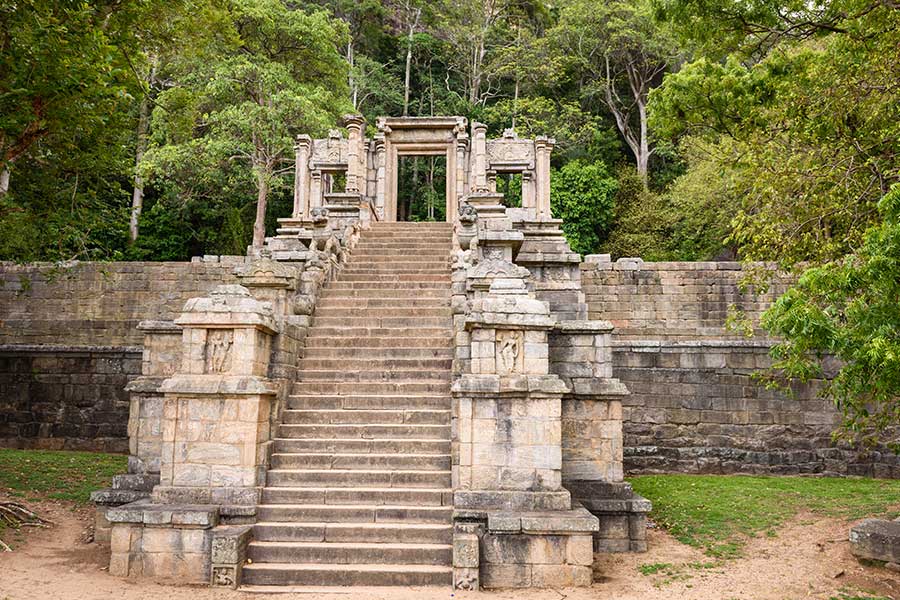
Yapahuwa Citadel
Yapahuwa is located a little way off the Kurunegala Anuradhapura road, in the Wayamba province of Sri Lanka. Of all the ancient ruins in the country the Rock Fortress Complex of Yapahuwa is considered to be quite remarkable despite the fact that it isn’t famous among most visitors. However, it is renowned as one of the best archeological site in the country.
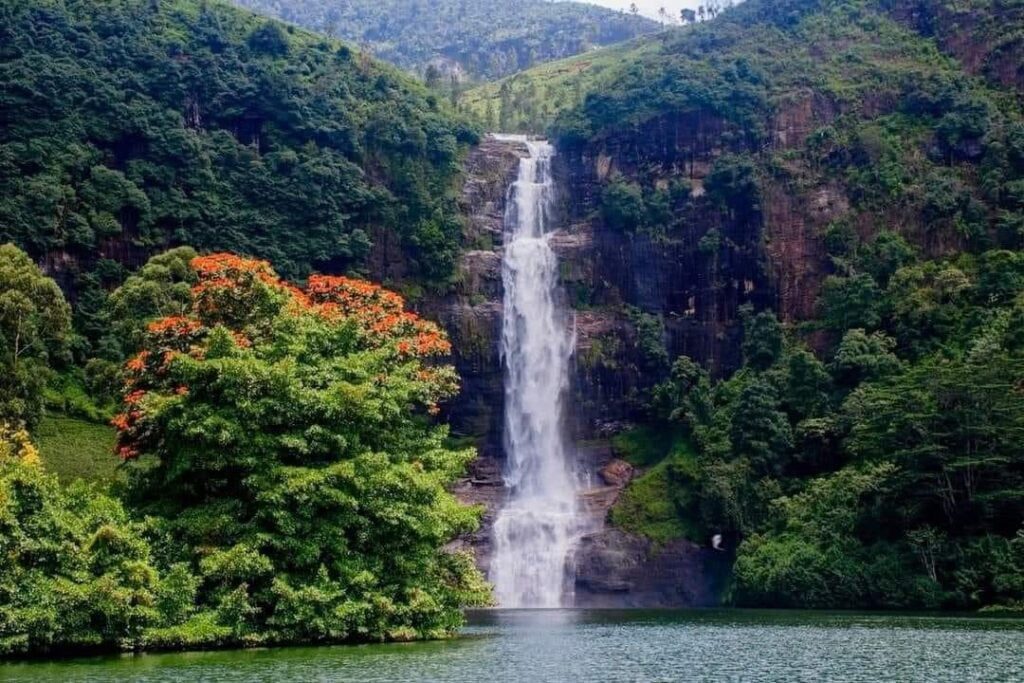
Gartmore / Sripada Fall
Gartmore Falls is situated in the Maskeliya town of Nuwara Eliya. It is 25 meters in height and is also known as “Sri Pada Falls” or “Adam’s Peak Falls” since it is located close to the Sri Pada Holy Mountain. Gartmore waterfall, located inside the Gartmore Estate, falls on to the Maskeliya Reservoir. It is fed by two streams which join above the Gartmore falls. Each of these streams creates a waterfall before joining and lies inside the Gartmore Estate.

Dunsinan Fall
Dunsinane Falls is a waterfall in Nuwara Eliya District of Sri Lanka. It is situated in Pundaluoya village and between the Tea estates known as Dunsinan and Sheen. Therefore sometimes this falls is called as Dunsinane Sheen falls. The waterfall is created by the Pundalu Oya river which is a tributary of Kotmale Oya.
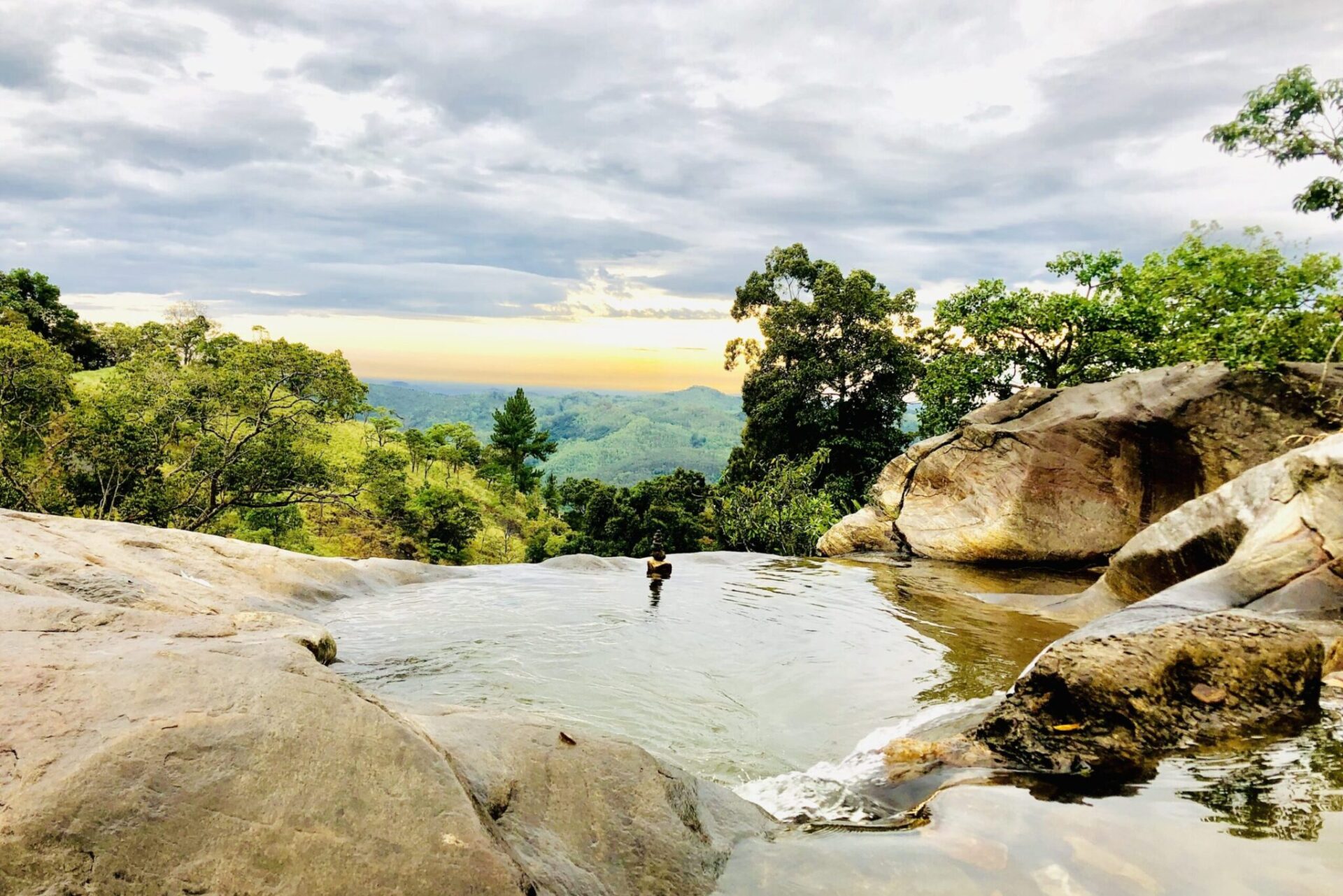
Upper Diyaluma Falls
Upper Diyaluma is the place with beautiful view. Diyaluma Falls is 220 m high and the second highest waterfall in Sri Lanka. It is situated 6 km away from Koslanda in Badulla District on Colombo Badulla highway. The Falls are formed by Punagala Oya, a tributary of Kuda Oya which in turn, is a tributary of Kirindi Oya. Upper Diyaluma falls encountering several waterfalls and natural pools, an unimaginable experience.

Wasgamuwa National Park
Wasgamuwa National Park is a natural park in Sri Lanka situated in the Matale and Polonnaruwa Districts. It was declared to protect and to make a refuge for the displaced wild animals during the Mahaweli Development Project in 1984 and is one of the four National Parks designated under the Project. One of the best national parks in Sri Lanka to spot wild elephants. Ideal to visit in evenings when elephants are more active.
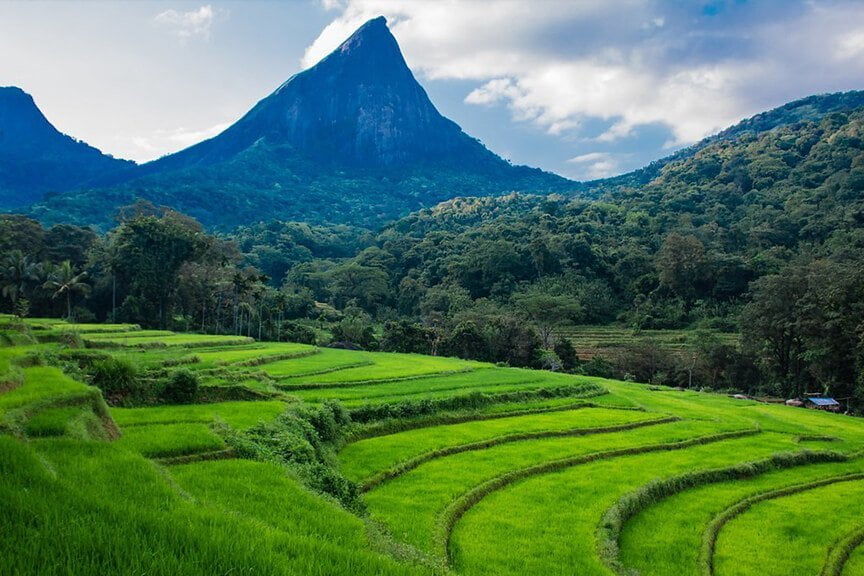
Meemure Village
Meemure is a village with a population of about 420 people living in it It is located near the border between Kandy District and Matale District in the Knuckles Mountain Range. Meemure is one of the most remote villages in Sri Lanka with the only access via a 14 km trail from the town of Loolwatte. The village has a population of roughly 400 people and 125 families. One of Meemure’s significant identities is architecture. The locals construct eco-friendly dwellings out of clay and Illuk (spear grass) that endure three decades.
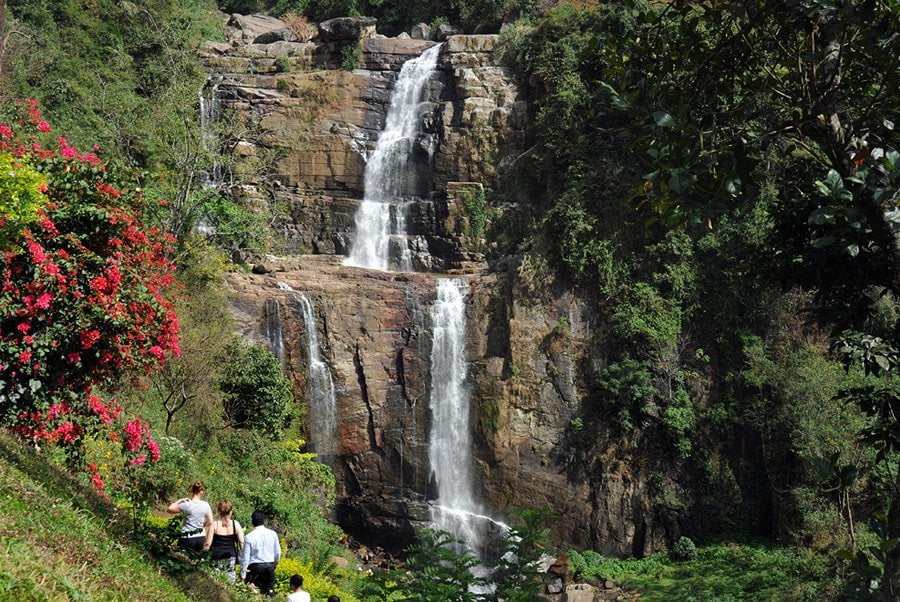
Ramboda Falls
Situated in the Ramboda area of Nuwara Eliya district, Ramboda falls is another popular waterfall in Sri Lanka. Though it is not a well-known fact, Ramboda falls consists of 3 parts called Ihala Ramboda Oya Ella (Upper Ramboda Oya Fall), Ramboda Oya Meda Ella (Middle Fall), and Pahala Ramboda Oya Ella ( Lower Ramboda Oya Falls)

Bopath Ella Falls
Bopath ella is a waterfall situated in the Ratnapura District of Sri Lanka. It has a shape very similar to the leaf of the Sacred fig or “Bo” tree, which has earned it this name. The waterfall is a major tourist attraction in the country. Local myths say that it is haunted and that it hides a treasure trove. Bopath Ella is 30 metres (98 ft) high. It is formed from the Kuru Ganga, which is a tributary of the Kalu Ganga.
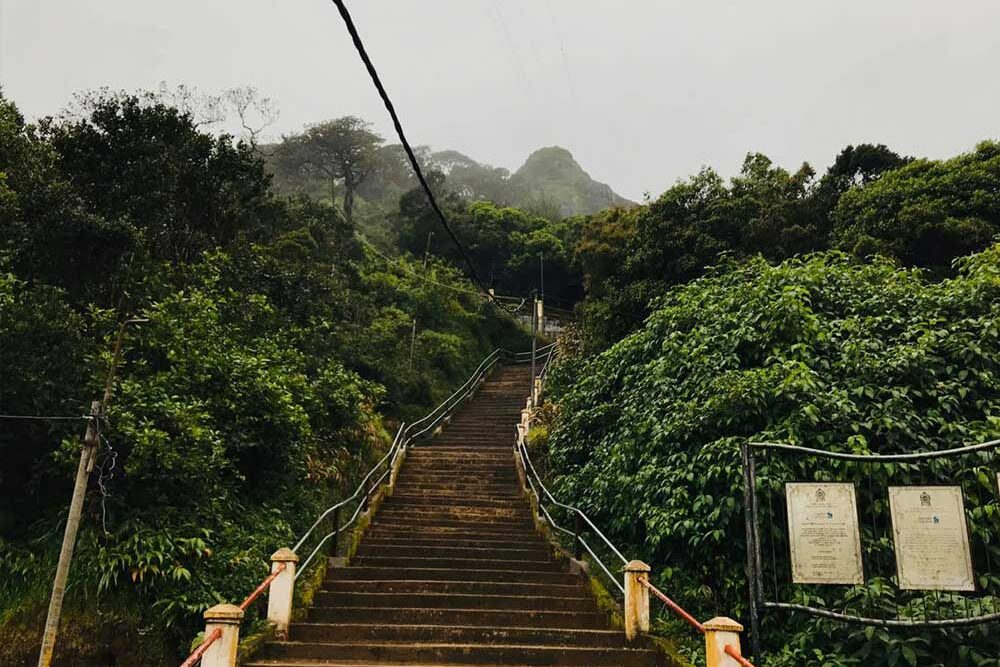
Adam’s Peak
Sri Pada, also known as Adam’s Peak, is a 2,243m (7,359 ft) mountain in the central highland region of Sri Lanka. Popular for Sri Lankans and tourists alike. The typical climb is started in the middle of the night so you can reach the peak for a breathtaking adams peak sunrise.Sri Pada, also known as Adam’s Peak, is a 2,243m (7,359 ft) mountain in the central highland region of Sri Lanka. Popular for Sri Lankans and tourists alike. The typical climb is started in the middle of the night so you can reach the peak for a breathtaking adams peak sunrise.
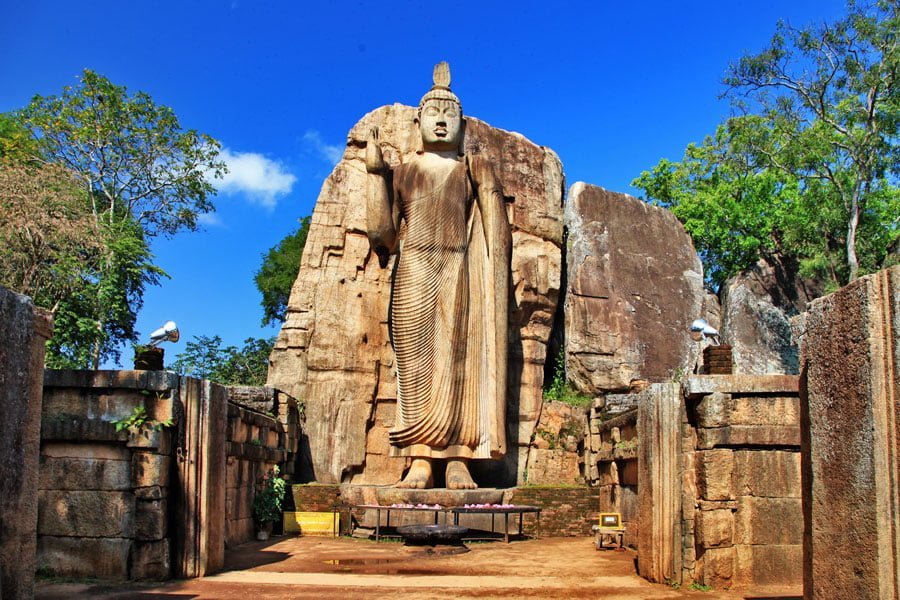
Awukana Statue
Aukana Ancient Rock Temple is a sacred Buddhist temple region that has numerous worth-seeing sacred residues including Aukana Buddha, a massive Buddha statue carved out of a large single rock, towering over 40ft height, being the specimen of excellent ancient sculpture technology of the nation. Both local and foreign pilgrims and tourists visit this sacred tourist attractions in Sri Lanka for seeing this tallest ancient standing Buddha statue of the nation, carved out elaborately in 5th century BC with an interesting history behind. Here you explore both the ancient civilization and culture and the antique yet finest stone art of Sri Lanka.
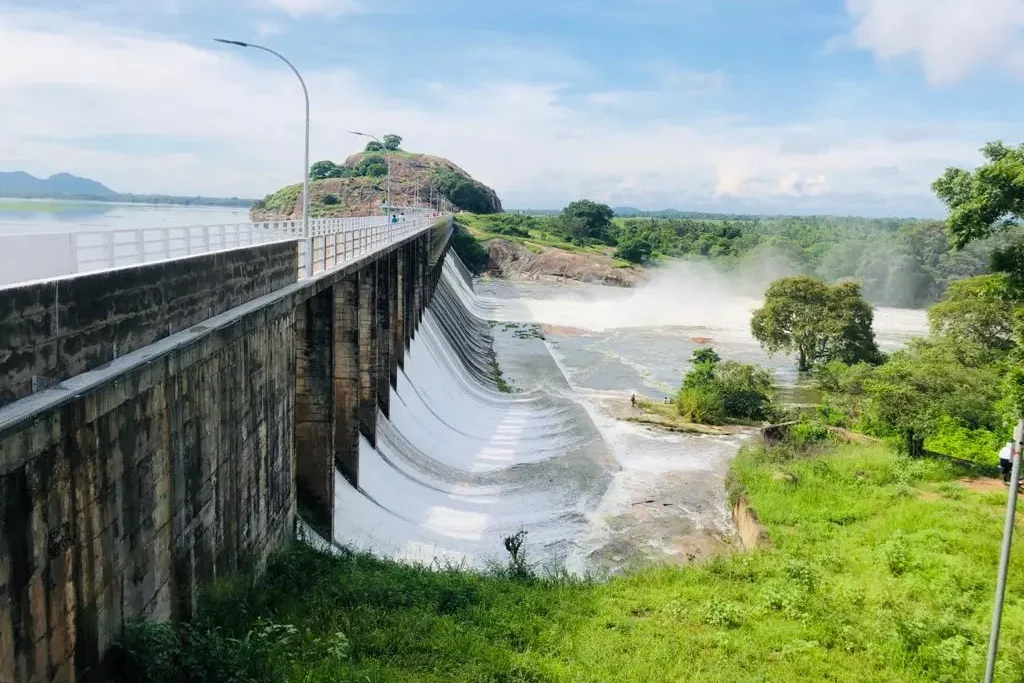
Rajangana Lake & Spillway
Rajangana Lake, located in the North Central Province of Sri Lanka, is an artificial reservoir created by the Rajangana Dam. Situated approximately 25 kilometers from Anuradhapura, this scenic lake lies near the ancient city of Rajangana, offering visitors a blend of natural beauty and historical significance.The Rajangana Dam, built across the Kala Oya River, is a gravity dam primarily constructed for irrigation purposes. The dam plays a crucial role in supplying water to the paddy fields and agricultural lands in the Anuradhapura and Kurunegala districts. Its impressive structure stands as a testament to the ingenuity of modern engineering, blending seamlessly with the surrounding environment. The spillway of the Rajangana Dam is an integral part of the structure, designed to manage excess water during periods of heavy rainfall. It ensures the safety and stability of the dam by controlling water flow, preventing overflow, and mitigating flood risks in the downstream areas. The spillway adds to the serene landscape of the lake, especially during times when water cascades over its gates, creating a picturesque scene. Overall, Rajangana Lake, Dam, and Spillway are not just engineering feats but also important resources for the local community and a hidden gem for nature lovers and history enthusiasts alike.
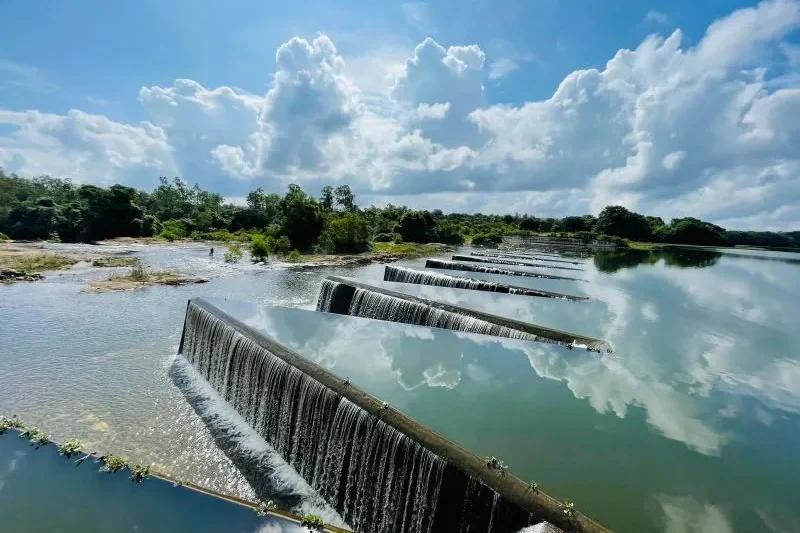
Pimbureththewa Spillway
Pimbureththewa Spillway is an important hydraulic structure located in the Polonnaruwa District of Sri Lanka, within the North Central Province. Situated near the Pimbureththewa Tank, this spillway plays a critical role in water management for the region, helping to regulate the flow of water and prevent flooding during periods of heavy rainfall. The spillway is part of the ancient irrigation system that has been vital to agriculture in the area for centuries. Its strategic location ensures the controlled release of excess water from the tank, protecting nearby farmlands and settlements. The surrounding area is characterized by lush greenery and paddy fields, typical of Sri Lanka’s dry zone, which depends heavily on these irrigation systems for sustenance. Pimbureththewa Spillway is accessible from the town of Polonnaruwa, a UNESCO World Heritage site known for its rich history and archaeological significance.
